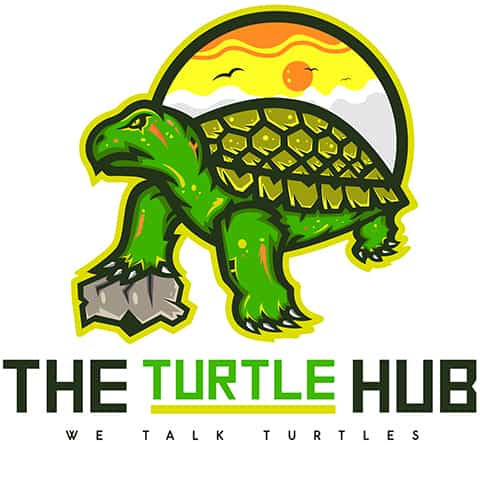Tags:
Why Is My Tortoise’s Eye Closed?


fact checked & review by
Dr. Partho Kumar Shaha
Veterinarian (DVM)
The information is current and up-to-date in accordance with the latest veterinarian research.
Have you seen a tortoise walking with closed or nearly closed eyes? Of course, it is not common for pets. So, the question is why the tortoise has a shut-eye and what you can do.
Your tortoise’s eye is closed because:
| Cause | Cure |
|---|---|
| Dehydration | Rehydration |
| Overexposing UV | Right UV percentage |
| Hypovitaminosis | Vitamin A-rich food |
| Post-brumation anorexia | Fluid therapy |
| Eye infection | Antibiotics |
| Foreign particles in eye | Warm soak |
| Third eyelid issue | Warm soak |
| Eye abscess | Elimination of pus |
For more details, go through the following article.
8 Reasons My Tortoise Has Closed Eye (Explained)
Tortoises do sleep with their eyes closed. It helps them sleep more peacefully, keeping the brightness out.
But when active, the tortoises tend to keep their eyes open. If you notice a shut-eye, something is messy with the pets.
Here are 8 reasons that can cause a close eye on the tortoise,
1. The Environment Causes The Shut Eye Condition
A tortoise walking inside the enclosure with closed eyes is never a good scene. Though some owners think it is a little play of the pets, it is not.
But luckily, the chances are the tortoise has healthy eyes. It is the pen environment that is causing the closed eye condition.
I have identified 2 habitat issues that can be responsible for the tortoise’s closed eyes. Such as,
- Low humidity
- Overexposing UV light
Low Humidity:
Well, tortoises are rough and hardy creatures. But when it comes to the environment, they are quite demanding. For example, they need proper temperature, humidity, heat, etc.
A drop in any of the requirements causes irregularity in the tortoise’s life. This is what happens with the lack of humidity in the enclosure.
The low humidity percentage dries the thin film on the tortoise’s eyes. These dehydrated tissues make the pet uncomfortable.
To come out of this situation, the tortoise will blink more frequently until the eyes get the desired moisture. The pet will keep its eyes closed if the humidity level is not restored soon.
Solution: The best way to restore the enclosure humidity is to light spray the substrate every day. Setting up a humidifier in the room will also benefit the pen. Besides, keeping a fresh bowl of water at one corner of the habitat is also recommended.
However, experts suggest bathing the tortoise regularly to heal the eye condition. The lukewarm soaking will definitely help. Follow this write-up on tortoise soaking to get a detailed bathing guide.
A sealed enclosure is an obstacle to achieving the right humidity. Therefore, make arrangements for proper ventilation inside the pen.
You can track the humidity percentage inside the pen with a hygrometer. Remember, each tortoise species has different moisture content requirements. Dropping below or exceeding the level is never recommended.
Overexposing UV Light:
The mandatory UV lights do not radiate heat. But boy! Those lamps are powerful.
While UVA and UVB exposures are essential, overexposure to these rays can cause issues. For example, if you install a desert UV bulb for the grassland tortoise, the pet will feel unforgettable physically. This situation can lead to shutting eyes.
Also, keeping the UV lamp on for more hours may cause this condition.
Solution: Selecting the right power UV bulb is necessary. Usually, tortoises live well in the UV percentage, within 10 – 12%.
However, besides the correct percentage, the positioning of the UV lamp is also crucial. I suggest installing the light 15 – 20 inches from the tortoise shell.
Keep the UV lamp 10 – 12 hours daily, depending on location. There is no need for UVB rays during the night.
Also, do not forget to replace the existing light once every 6 months.

2. The Tortoise Has Hypovitaminosis A
I am sure you are familiar with vitamin A deficiency in tortoises. Not giving the species sufficient amounts of vitamin A will lead to this condition.
As a consequence, you will notice some visible changes in the tortoises. Shut eyes are one of them. Other symptoms of hypovitaminosis are,
- Swollen eyes
- Push on the eyelids
- Overgrown skin tissues
- Mouth infection
- Respiratory tract infection
- Nasal discharge
- Appetite loss
- Weight loss
- Fatigue
- Wheezing, etc.
Sometimes keepers feed the tortoises enough vegetables. Yet, the pets develop vitamin A deficiency. Why?
Well, the probable reason is that you are choosing the wrong veggies. For example, iceberg lettuce is high in water content. But it contains a small amount of nutrients. Thus, making the tortoises full on this green will do no good.
Apart from this, adding commercial meals and meaty diets will do the same. You really need to review the food habits of the tortoises.
Solution: Tortoises usually do not suffer from vitamin A deficiency. The reason is that their diet is based on grass and other greens.
However, it is never too late to restore the balance if you mess up. Some vitamin A-rich vegetable sources are dark leafy greens, yellow and orange vegetables, etc. Backing up the need with a supplement will also do fine.
The vet sometimes adds oral drugs or vitamin A shots to recover the tortoises.
3. Your Pet Is Just Out Of Brumation
Tortoises keeping an eye closed after brumation poses two possibilities,
All Natural:
First, a shut-eye is expected as tortoises produce mucus to combat dryness during the period. Therefore, the build-up will make the eyes sticky and closed.
However, the sticky development falls on naturally within hours.
If the tortoise still has a closed eye for over 48 hours, you need to consider the second possibility.
Solution: Soak the tortoise with lukewarm water to remove the stickiness.
Post Brumation Anorexia:
See, brumation is natural even in a tortoise’s life. But the situation can go south when you brumate the pet in captivity. In many cases, the tortoise experiences serious physical sickness after coming out of its sleep.
Therefore chances are that the pet is roaming around with a shut eye because of an illness.
Usually, tortoises live on stored protein and energy when they brumate. Upon waking, they may find it difficult to return to their eating habits. This inability leads to post-brumation anorexia. A closed eye for days, even after waking up, is definitely a sign of this condition.
Undetected physical condition, for example, low white cell count and chronic illness before brumation, causes this type of anorexia. However, an unplanned and imperfect brumating environment is mainly responsible for it.
Say, if you keep the tortoise in brumation for longer than natural, it will lead to anorexia. Likewise, trauma during sleep and unfit waking temperatures also cause this condition.
Immediate treatment is mandatory to recover the tortoises from this illness.
Solution: A home treatment is impossible to cure post-brumation anorexia in tortoises. They require an esophagostomy tube for cure under the expert’s supervision.
The professional injects water and electrolyte into the tortoise’s system during this fluid therapy. It may take more than 2 months for the sick tortoise to get back on its feet.
Of course, it is better if you can avoid this situation altogether by following the right rules for brumation. Such as,
- Do not brumate a tortoise under 200 grams.
- The tortoise should be well fed during the past months and put on fasting as the brumation period approaches.
- You must bathe the tortoises regularly during the preparation period. It will make sure that the pets are hydrated.
- Take the tortoise to a vet to make sure it is fit for the stressing brumation.
- Before the winter, maintain a temperature below 59 degrees Fahrenheit with decreasing sunlight.
- The proper brumation temperature is 35 – 46 degrees Fahrenheit.
- In any case, the brumation period should not exceed 15 – 20 weeks.
- Gradually increase the temperature to 59 degrees Fahrenheit when it is time to wake up the tortoises.
- Keeping the tortoises under sunlight and in a warm enclosure will help them reactivate their metabolism fast.
4. Have You Considered Eye Infection?
Swollen eyes or conjunctivitis mostly occur in tortoises after coming out of brumation. It is an eyelid inflammation caused by a bacterial attack.
Usually, tortoises stay at a low temperature when burmating. As we know, the temperature drop reduces these pets’ immunity to fight the infection. Therefore, your pet may wake up with sore and closed eyes.
Solution: Bathing the tortoise with lukewarm water eases the discomfort due to sore eyes. You can consult the vet for prescribed medication. Besides, maintain a healthy temperature and balanced diet for the tortoise.

5. Dehydration Can Be A Cause
Lack of water in the system affects the central rental vein of the tortoises. It causes an occlusion, blocking the healthy blood flow to and from the eyes. As a result, the dehydrated tortoises can not open their eyes and keep them shut.
Solution: You need to restore the humidity percentage in the enclosure and find ways to rehydrate the tortoises. For example, keep a bowl of fresh water at one corner of the enclosure.
Light spray the substrate daily to retain the moisture percentage. Besides, soaking the tortoises regularly is the best way of rehydrating them. Moreover, adding water-rich greens to the pet’s meal is a good idea to beat dehydration.
6. Deal With The Third Eyelid
Well, tortoises have a third eyelid (Nictating Membrane), which helps clean the eyes during blinking. Muscles and tendons control this eyelid.
Excessive mucus in the tissue or dryness leads to inflammation in the third eyelid. When dry, the eyelid becomes stiff and scratchy. Thus, the tortoises find it really painful to open their eyes.
It means any inflammation in the third eyelid will cause a shut-eye in the tortoise. In such a scenario, the eyelid becomes more pronounced than before.
Generally, the third eyelid inflammation occurs when you keep the tortoise for an extended period of brumation. It means this is a post-brumation condition.
We usually can not spot the third eyelid unless we pay real attention. You may get a glimpse of it when the tortoise sweeps across the eye surface.
Solution: As mentioned, third eyelid inflammation is a post-brumation condition and it occurs due to dehydration. Therefore, rehydrating the pets will help them recover. For example, you can soak the eye with lukewarm water.
However, feel free to consult a vet if the home treatment fails.
7. There Is A Trapped Foreign Matter
Tortoises are curious by nature. Hence, they stick their heads in god knows what. It can be the substrate or the pile of greens.
Sometimes, foreign matters get trapped in the tortoise’s eyes during this play. This not only makes the pets uncomfortable, but they also feel irritation in the eyes. Hence, you will notice them resting with a closed eye.
Do not ignore the condition for too long. A trapped wood chip or similar substance can severely damage the tortoise’s eyesight.
Solution: Removing foreign matter from the eyes is no big deal. Pour lukewarm sterile water on the eyes drop by drop or soak the pets. It will soften the substance and ease the tortoises in no time. You can also go for antiseptic eye drops after consulting with a vet.
8. Maybe An Eye Abscess
Eye abscess is similar to the ear abscess of tortoises. Any cut on the eyelids may get infected if not treated on time. The infection later turns into an abscess and develops a spot full of pus.
You will notice swelling in the infected eyes. The swelling can become so severe that the tortoise can not retract into its shell completely.
An abscess is very much visible and requires immediate treatment. Otherwise, the wound will get nastier and cause long-term damage to the pet.
Solution: Take the tortoise to a vet for proper treatment. He will squeeze out the pus and prescribe medicine for the underlying infection. Home treatment will not work for eye abscesses.
What Does A Healthy Tortoise Eye Look Like?
Tortoises with good health have shiny eyes. The most common eye color in this species is bright black.
However, some species may have orange or yellow eyes.
Again, the tortoises keep both their eyes open during the day activities. The pets will close their eyes when sleeping or resting to eliminate the brightness.

Can You Prevent The Closed Eye Condition In Torotises?
By now, you know that shut-eye is nothing but a physical condition. It occurs due to the environment, unhealthy care sheets, and improper planning. Therefore, it is possible to prevent this eye condition in tortoises.
I follow the mentioned steps to maintain a healthy eye on my tortoises,
- A filthy environment raises the risk of infectious diseases for the tortoises. Hence, I always focus on the cleanliness and hygiene of the habitat. Remove the food scrap and poop from the enclosure every day.
- The substrate should not contain sharp bedding that can trap the tortoise’s eyes. Also, eliminate sharp edges from the pen to a minimum risk of eyelid cuts.
- Light spray the substrate daily to trap the moisture inside the enclosure. Track the humidity percentage with a hygrometer.
- I offer the pets a fresh bowl of water every day. Besides, I give them regular baths with lukewarm water. These two tricks always work to keep the tortoises hydrated.
- A balanced diet is mandatory to combat vitamin deficiency in tortoises. Multivitamins and supplements are also recommended to back up the requirement.
White Film On The Tortoise Eyes: Why?
You may notice a white film on the tortoise’s eyes, hampering their eyesight. Such a film indicates that the tortoise is suffering from any of the diseases mentioned below,
- Respiratory illness
- Eye infection
- Vitamin deficiency
- Low water quality, etc.
To treat this condition, you must determine the cause first. Then you can move forward according to the situation. But the common measures are,
- Keep the tortoise habitat clean and provide the pet with fresh water.
- The enclosure should be spacious enough for the tortoise with the appropriate environment
- Feed the tortoise a balanced diet with supplements
Can A Blind Tortoise Survive?
A blind tortoise in the wild may not survive for long. It is because the creature will fail to find food and escape from the predator.
However, the situation is different in captivity. Yes, blind tortoises require more help and attention from you. But raising the pet will make you content as a reptile lover.
The main challenge with blind tortoises is to feed them. You can overcome this obstacle with the following tricks,
- Build a smaller container for feeding purposes. Fill the space with tasty meals. The tortoise will have more access to food this way. Do not forget to provide the pet with fresh water.
- Select strong-odored food items for the tortoises. The pets can not ignore the yummy scent.
Before You Go
Turtles also suffer from different eye conditions. A delay in the treatment can lead to blindness in the pets. The below links introduce you to the common eye conditions in turtles and their treatments. You can apply the tricks with tortoises too.
Turtle eye diseases: Symptoms, prevention, & cure
Turtle eye infection: Home remedies

About Author
Muntaseer Rahman started keeping pet turtles back in 2013. He also owns the largest Turtle & Tortoise Facebook community in Bangladesh. These days he is mostly active on Facebook.
Disclaimer
This site is owned and operated by Muntaseer Rahman. TheTurtleHub.com is a participant in the Amazon Services LLC Associates Program, an affiliate advertising program designed to provide a means for sites to earn advertising fees by advertising and linking to Amazon.com. This site also participates in other affiliate programs and is compensated for referring traffic and business to these companies.
